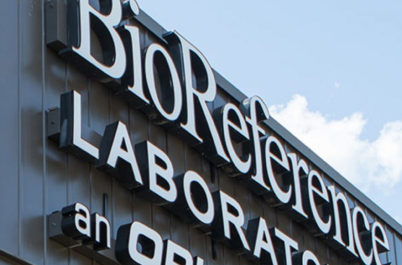Multi-location vs. Fixed Location Scheduling: Differences, Challenges, and Solutions
Effective scheduling is a complex—albeit crucial—part of managing a mobile workforce. It’s an even more challenging process for organizations that need to schedule for multiple locations simultaneously. While companies with a fixed-location workforce certainly struggle with scheduling challenges of their own, businesses that employ multi-location workers face unique obstacles within the scheduling process. Issues in workforce visibility, proper job-to-resource matching, routing, communication, and more hinder a business’s ability to efficiently schedule deskless workers at various locations.
Intelligent scheduling software can mitigate these challenges, but choosing the right tool is often a confusing, laborious task. Organizations often invest in a slew of technologies in an effort to optimize the scheduling process. But disconnected and decentralized solutions can negatively impact multi-location scheduling, creating workflow bottlenecks that hinder deskless workers’ productivity and damage employee and customer satisfaction.
In order to compare and choose the best software to schedule a deskless workforce that serves multiple locations, an organization must first understand available software features, what those features actually do, and which ones are crucial (or extraneous) for their unique use case.
How Multi-location and Fixed-location Scheduling Differs
As businesses evaluate workforce scheduling solutions, it’s important to recognize the distinct differences between their operational challenges and goals. Scheduling platforms built for companies with a multi-location workforce likely aren’t the best fit for those with a fixed-location workforce, as each contends with highly specific pain points.
Challenges of fixed location scheduling
Fixed-location work typically refers to shift-based appointments in a single, recurring setting. One example of this is a healthcare provider that manages and schedules a large pool of resources who work shifts in a hospital, but who aren’t traditional, desk-based employees. This might also mean scheduling commercial HVAC installation or maintenance services over an extended period of time (e.g. a week, several weeks, or even a month).
The challenges of managing fixed-location employees include providing fair, equitable scheduling for recurring work patterns, ensuring on-site tech access, and planning to capacity. These issues are often exacerbated when employees call in sick and the organization must quickly facilitate staff movements to balance capacity and keep shifts staffed.
A fixed-location workforce needs a scheduling solution that can help schedulers manage capacity, handle exceptions and employee reallocation, and ensure compliance. Without these crucial capabilities, businesses with fixed-location workers will likely struggle to achieve or maintain the workforce visibility and efficiency required for success.
Challenges of multi- location scheduling
Mobile, multi-location workers, on the other hand, typically travel from one job site to the next on a regular basis. This might include home healthcare nurses who travel to each patient’s home to provide services, or field service technicians who conduct their work at different customer sites each day.
Organizations that schedule workers at multiple locations commonly struggle with logistical challenges, like moving employees from one appointment to the next. It’s an inherent obstacle for deskless workers who deliver services in a variety of places, as traveling from job to job (and arriving on time) depends on many outside factors—like traffic, weather, road construction, etc. Unlike the recurring patterns we see in fixed-location work, multi-location workers frequently receive ad hoc appointment requests, which must be properly scheduled and traveled to at the drop of a hat. Complexities in workers’ locations, up-to-date availability, routing, and communication can quickly accumulate, resulting in scheduling inefficiencies.
A multi-location workforce, then, needs a scheduling solution that’s built with these unique challenges in mind. Software that supports the needs of a fixed-location workforce simply doesn’t provide the distinct capabilities required to efficiently manage and schedule deskless workers who travel to various locations to deliver services.
Essential Capabilities of Multi-location Scheduling Software
As is the case with any type of technology, not all multi-location scheduling software is built equally. To ensure your team has everything they need for an efficient, location-based scheduling process, leverage a tool that offers:
Intelligent, automated scheduling and dispatching
A manual scheduling and dispatching process is time-intensive, repetitive, and burdensome for already-busy staff schedulers. It’s also error-prone, as matching the right deskless worker to the right job (based on skill set, location, preference, job history, etc.) requires an intricate, up-to-date understanding of where employees currently are, where they’re headed next, how long it will take them, for which jobs they’re best suited, and more. Traditional tools, like spreadsheets, just don’t offer the dynamic capabilities needed to efficiently schedule numerous mobile workers at different locations in any given moment.
Because multi-location work often consists of impromptu appointments at customer sites where employees have never been, deskless workers need tools that get them there quickly and safely. They need a scheduling solution that takes into account outside factors (e.g. traffic, weather, construction delays, etc.) so they can get from one job to the next; without having to toggle between their work and navigation apps while driving. Businesses need a multi-location scheduling tool that enables them to see when and where work is being completed to better understand job status, worker trends, and overall team output.
As you evaluate your scheduling software options, look for a tool that automates the scheduling and dispatching process. Some platforms enable teams to set up constraints and business logic that are fully customized to broader goals and objectives. Intelligent automation instantly matches the best resource to the job, every time, and optimizes routes to reduce total travel distance or time spent on the road. Modern tools even support building flexible activities into schedules by allowing managers to define breaks (e.g. a 30-minute lunch break anywhere between 11:30am and 1:00pm) and encourage a healthy work-life balance.
Mobile-first capabilities and real-time updates
If your deskless workers and staff schedulers still need multiple, disparate tools to create and access schedules, communicate updates, and find relevant job information, they’re at a disadvantage to better-prepared competitors. In fact, one study showed that 67% of people claim it would be easier to focus on their work if all of their most relevant information was shown in a single place. It’s vital for mobile workforce organizations (especially those that schedule for different locations) to empower employees with everything they need when and where they need it. Requiring workers to toggle between a scheduling app, navigation tool, email, text messages, phone calls, and more is a frustrating waste of time.
Multi-location deskless workers frequently arrive at appointment sites they’ve never seen, which means it’s not uncommon for them to face issues in accessing the right people, technology, entrances, and resources they need once they get there. Thus, they need intuitive, effective communication tools that empower them to reach out to both the back-office and the customer for answers at a moment’s notice. A mobile-first scheduling tool provides them with contact and job site information in a single place, so they can actually access everything they need once they arrive.
Your multi-location scheduling tool should offer a user-friendly mobile app that sends SMS and push notifications to deskless workers for real-time job updates. Mobile-first technologies enable your workforce to deliver exceptional service on-the-go and significantly reduce the time otherwise spent digging for information or reaching out for updates. With robust capabilities for instant communication and sharing critical job details, mobile workers and back-office employees can securely send crucial data to one another quickly and seamlessly—all in a single, centralized place. The result is a happier, more productive workforce and a more effective, efficient mobile workforce operation.
Configurability, APIs, and integrations with your tech stack
Some multi-location scheduling tools don’t integrate with existing systems of record, which creates data silos, hinders your insights into workforce capacity, and limits your ability to create an excellent, customized customer experience. Your current systems (e.g. HR, ERP, and CRM platforms) collect and store crucial business information; so if your scheduling software doesn’t communicate with each, you’re likely missing out interoperable data that can help you streamline operations, reduce costs, and identify ways to boost workflow efficiency and customer satisfaction.
Look for scheduling software that easily connects with your other systems of record or proprietary apps to ensure data flows across users and technologies. Your tool should offer APIs that help you quickly build your own apps that are tailored to your unique brand, so your customers can seamlessly book their own appointments, receive real-time updates, and track accurate arrival times. Some technologies even allow you to configure specific scheduling requirements—like the number of resources needed at a location, required skills to complete the job, and more—for each appointment, so you know you’re always sending qualified, prepared workers who are ready to delight your customers.
Centralized platform for visibility into the entire workforce
Properly scheduling your deskless workers to various locations is difficult (if not impossible) if you don’t have complete transparency into their current locations, availability, or skill sets. What’s more, without workforce visibility, it’s challenging to keep up with fluctuating client demand, leading to issues in premature worker burnout, underutilization, and inadequate customer service.
This is especially difficult for multi-location workers, since their most vital job details (e.g. where they complete their work, what work they complete, how long it takes to complete each job) are ever-changing. And since organizations with a multi-location workforce often receive ad hoc or last-minute customer appointment requests, they need scheduling tools that help their teams stay on top of those dynamic factors.
Competitive mobile workforce organizations have started investing in centralized scheduling software that provides analytics tools, which enable them to use key insights to improve operational efficiency, better match resources to specific jobs and locations, and make strategic decisions ott grow the business. By increasing workforce visibility through a centralized system, staff schedulers can easily send deskless workers to where they’re most needed (based on skills, certifications, availability, and more), to ensure quality service every time. For instance, an in-home behavioral health service provider can match their most skilled workers to the most complex appointments, while sending novice employees to more straight-forward jobs.
Plus, a centralized platform helps businesses better identify and predict periods of increased or decreased demand, so they can better plan and budget for resource and hiring needs. Team members always have access to accurate, real-time data that reflects customer needs against worker availability and broader business objectives.
Manage Complex Scheduling and Rostering with Skedulo
Skedulo’s powerful multi-location scheduling and rostering software meets all the essential requirements needed for a more efficient workforce—and more satisfied customers. The centralized platform makes it easy to manage your entire deskless or blended workforce, regardless of where they work. It helps teams overcome the complexities of scheduling at various locations, with tools for automated scheduling and dispatching, route optimization, accurate forecasting, and more; all in a user-friendly mobile app.
Unlike other scheduling systems, Skedulo is built with the deskless workforce in mind and prioritizes the unique needs of organizations that must schedule their workers to different job sites. The platform can be seamlessly integrated with existing systems, easily configured to specific business requirements, and tailored to optimize an organization’s complex mobile workforce operation.
In the midst of the COVID-19 pandemic, for example, Skedulo’s high-capacity scheduling software helped BioReference Laboratories to quickly scale their testing efforts. Since the sheer volume of appointment bookings threatened BioReference Laboratories ability to meet testing needs across multiple U.S. states, they needed a robust solution for effective, safe, and flexible scheduling.
Skedulo’s comprehensive scheduling solution enabled BioReference Laboratories to:
- Offer self-service customer appointment booking, based on location and time-slot availability
- Automatically send confirmation and appointment reminders to customers
- Share a unique QR code associated with each person’s booking details, so testing check-in remained contact-free and complied with social distancing guidelines
- Eliminate the need for manual data entry to accelerate the testing process
With Skedulo’s intelligent software solution, BioReference Laboratories was able to manage more than 4 million appointments across more than 17 testing centers, using hundreds of staff. They were able to manage and optimize for the complexities of high-capacity, multi-location scheduling during COVID-19 to conduct safe, effective testing.
Start Efficiently Scheduling Your Mobile Workforce Today
Efficient scheduling of your deskless workforce across numerous locations is essential for ensuring proper workforce utilization, meeting (or exceeding) employee and customer expectations, and boosting worker productivity. But to get it right, you need a tool that integrates with your existing systems to improve workforce transparency and streamline operations.
Skedulo’s robust scheduling and dispatching software helps organizations seamlessly schedule deskless workers at various locations, with tools for proper job matching, optimized routing, and real-time communication. The centralized, mobile-first platform ensures teams have everything they need to deliver exceptional customer experiences—and offers critical business insights for improving workflows, reducing inefficiencies, and driving further growth.
Learn more about how the right scheduling tool can impact your deskless workers, your customers, and your business, or book a demo today.






